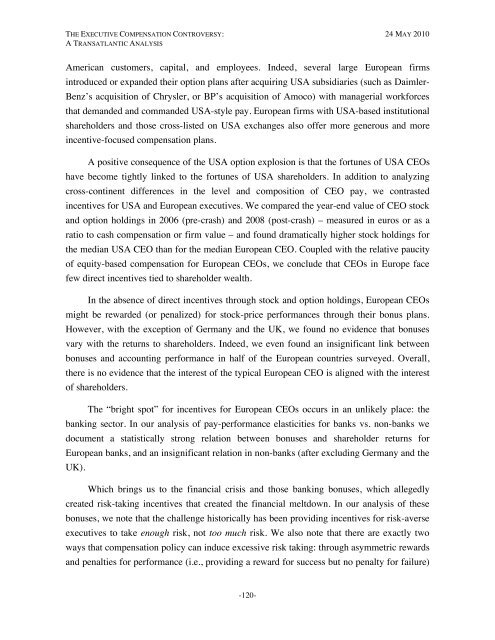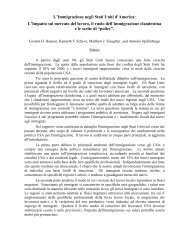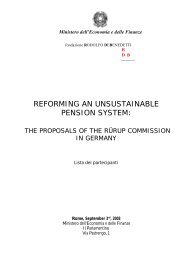The Executive Compensation Controversy - Fondazione Rodolfo ...
The Executive Compensation Controversy - Fondazione Rodolfo ...
The Executive Compensation Controversy - Fondazione Rodolfo ...
You also want an ePaper? Increase the reach of your titles
YUMPU automatically turns print PDFs into web optimized ePapers that Google loves.
THE EXECUTIVE COMPENSATION CONTROVERSY: 24 MAY 2010A TRANSATLANTIC ANALYSISAmerican customers, capital, and employees. Indeed, several large European firmsintroduced or expanded their option plans after acquiring USA subsidiaries (such as Daimler-Benz’s acquisition of Chrysler, or BP’s acquisition of Amoco) with managerial workforcesthat demanded and commanded USA-style pay. European firms with USA-based institutionalshareholders and those cross-listed on USA exchanges also offer more generous and moreincentive-focused compensation plans.A positive consequence of the USA option explosion is that the fortunes of USA CEOshave become tightly linked to the fortunes of USA shareholders. In addition to analyzingcross-continent differences in the level and composition of CEO pay, we contrastedincentives for USA and European executives. We compared the year-end value of CEO stockand option holdings in 2006 (pre-crash) and 2008 (post-crash) – measured in euros or as aratio to cash compensation or firm value – and found dramatically higher stock holdings forthe median USA CEO than for the median European CEO. Coupled with the relative paucityof equity-based compensation for European CEOs, we conclude that CEOs in Europe facefew direct incentives tied to shareholder wealth.In the absence of direct incentives through stock and option holdings, European CEOsmight be rewarded (or penalized) for stock-price performances through their bonus plans.However, with the exception of Germany and the UK, we found no evidence that bonusesvary with the returns to shareholders. Indeed, we even found an insignificant link betweenbonuses and accounting performance in half of the European countries surveyed. Overall,there is no evidence that the interest of the typical European CEO is aligned with the interestof shareholders.<strong>The</strong> “bright spot” for incentives for European CEOs occurs in an unlikely place: thebanking sector. In our analysis of pay-performance elasticities for banks vs. non-banks wedocument a statistically strong relation between bonuses and shareholder returns forEuropean banks, and an insignificant relation in non-banks (after excluding Germany and theUK).Which brings us to the financial crisis and those banking bonuses, which allegedlycreated risk-taking incentives that created the financial meltdown. In our analysis of thesebonuses, we note that the challenge historically has been providing incentives for risk-averseexecutives to take enough risk, not too much risk. We also note that there are exactly twoways that compensation policy can induce excessive risk taking: through asymmetric rewardsand penalties for performance (i.e., providing a reward for success but no penalty for failure)-120-









